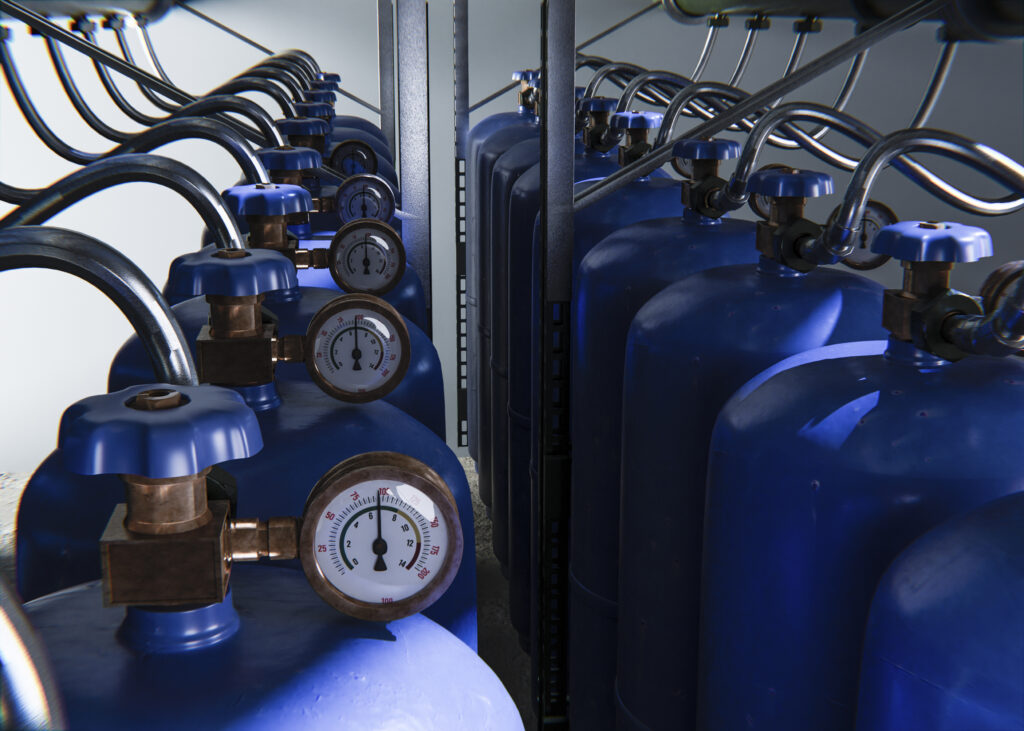In industries where gas is measured, monitored, or controlled—such as oil and gas, chemical manufacturing, pharmaceuticals, and HVAC—precision is critical. Whether it’s monitoring gas flow in pipelines, regulating fuel to burners, or ensuring accurate dosage in medical devices, the performance of flow meters directly impacts product quality, safety, and operational efficiency.
This is where gas flow calibration comes in. Calibration ensures that the flow meters used to measure gases are accurate and reliable. Without proper calibration, even the most sophisticated flow meters can yield incorrect readings, leading to inefficiencies, safety risks, and regulatory non-compliance.
This article explores what gas flow calibration is, why it’s essential, the methods used, and the industries that depend on it.
What is Gas Flow Calibration?
Gas flow calibration is the process of comparing the readings of a gas flow meter to a reference standard under controlled conditions. The goal is to verify and adjust the instrument so that it accurately reflects the actual flow rate of the gas.
Over time, flow meters can drift due to wear, environmental changes, contamination, or mechanical stress. Calibration corrects these deviations to restore measurement accuracy.
Why Is Gas Flow Calibration Important?
1. Accuracy and Precision
Even small measurement errors can lead to significant problems in gas distribution, combustion processes, or chemical reactions. Calibration ensures consistent and precise readings.
2. Compliance with Standards
Regulatory bodies often require routine calibration to meet industry standards like ISO/IEC 17025, ASTM, or NIST traceability.
3. Operational Efficiency
Accurate flow readings help optimize gas usage, reduce waste, and improve energy efficiency across systems.
4. Safety Assurance
Incorrect gas flow measurements can lead to dangerous pressure build-up, incomplete combustion, or hazardous leaks—especially in flammable or toxic environments.
5. Cost Savings
Undetected errors in flow measurement can result in overconsumption of gas, equipment wear, or product defects—all of which can be costly.
Types of Flow Meters Used for Gases
Several types of flow meters are used to measure gas flow, and each requires different calibration considerations:
- Thermal Mass Flow Meters
- Coriolis Flow Meters
- Rotameters
- Turbine Flow Meters
- Ultrasonic Flow Meters
- Differential Pressure Flow Meters (e.g., orifice plates)
Each of these technologies measures flow in a different way (mass vs. volumetric), and calibration procedures vary accordingly.
Methods of Gas Flow Calibration
There are two primary approaches to gas flow calibration: primary standard calibration and secondary standard calibration.
1. Primary Standard Calibration
This method uses a direct measurement system that does not rely on another calibrated instrument. Examples include:
- Gravimetric Method: Measures the weight of gas over time.
- Volumetric Method: Uses a piston prover or bell prover to measure volume directly.
Primary methods offer the highest level of accuracy and traceability.
2. Secondary Standard Calibration
Here, the flow meter is compared against another calibrated meter (the secondary standard), which has itself been calibrated using a primary method. This is more cost-effective and suitable for routine calibration.
Gas Flow Calibration Procedure: Step-by-Step Overview
- Preparation
- Identify the type of gas and meter.
- Set up the test bench with a known reference (primary or secondary).
- Ensure all instruments are clean and free from leaks or damage.
- Identify the type of gas and meter.
- Stabilization
- Allow the gas to flow through both the reference and the meter under test.
- Stabilize pressure, temperature, and flow conditions.
- Allow the gas to flow through both the reference and the meter under test.
- Measurement
- Record readings from both the reference standard and the test meter at multiple flow points (low, medium, high).
- Calculate the deviation or error.
- Record readings from both the reference standard and the test meter at multiple flow points (low, medium, high).
- Adjustment (if needed)
- Calibrate or adjust the flow meter’s internal settings to match the reference.
- Calibrate or adjust the flow meter’s internal settings to match the reference.
- Documentation
- Generate a calibration certificate with traceability information, test results, and calibration date.
- Generate a calibration certificate with traceability information, test results, and calibration date.
- Post-Calibration Checks
- Re-test if necessary to confirm accuracy.
- Seal and tag the instrument to prevent tampering.
- Re-test if necessary to confirm accuracy.
How Often Should Gas Flow Meters Be Calibrated?
Calibration frequency depends on several factors:
- Manufacturer’s recommendation
- Frequency of use
- Environmental conditions
- Criticality of the application
As a rule of thumb, flow meters should be calibrated annually. However, high-precision or mission-critical applications may require biannual or quarterly calibration.
Challenges in Gas Flow Calibration
- Gas Compressibility: Gases change density with pressure and temperature, making measurement more complex than with liquids.
- Leakage: Even minor leaks can skew calibration results.
- Contaminants: Dust or oil in gas lines can affect readings.
- Environmental Control: Precise control of pressure and temperature is required to ensure repeatable calibration results.
These challenges highlight the need for experienced technicians and specialized calibration labs with traceable standards.
Industries That Rely on Gas Flow Calibration
- Oil and Gas
- Power Generation
- Pharmaceuticals
- Food and Beverage
- Chemical Manufacturing
- Medical and Laboratory Equipment
- HVAC and Building Automation
Each industry has its own set of compliance requirements and performance criteria, making accurate gas flow calibration essential.
Conclusion
Gas flow calibration is a critical maintenance and quality assurance procedure that ensures the accuracy, safety, and efficiency of gas measurement systems. With growing industrial dependence on automation and precision, the demand for reliable gas flow measurement has never been higher.
By scheduling regular calibration using certified labs or in-house procedures with traceable standards, industries can avoid costly errors, maintain regulatory compliance, and ensure the smooth operation of gas-related processes.


